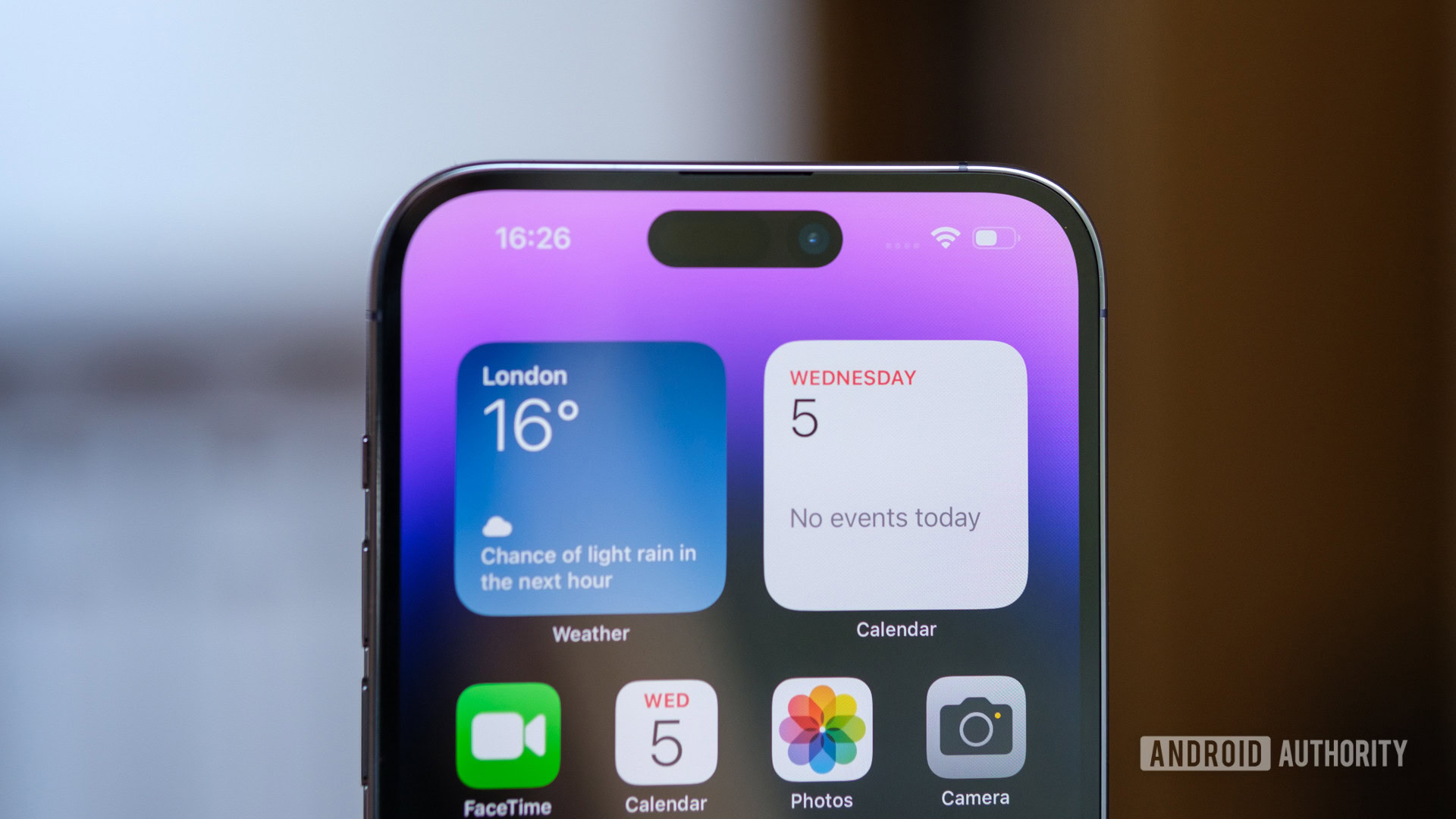Affiliate links on Android Authority may earn us a commission. Learn more.
The iPhone 16 series could offer under-display Face ID next year

- Apple will apparently bring under-display Face ID to the iPhone 16 Pro line.
- This will allow for a smaller display cutout and a larger usable screen area.
Under-display fingerprint sensors have been around on smartphones for a few years now, hiding the scanner under the screen. Now, it sounds like Apple is planning to place its 3D face unlock sensors under the display too.
The Elec reports that the iPhone 16 Pro series (scheduled for release in 2024) could arrive with under-display face unlock or Face ID. This would enable Apple to significantly shrink the size of the “Dynamic Island” display cutout seen on the iPhone 14 Pro series, giving people more usable screen area in return.
There’s no word on whether under-display Face ID would be less responsive than Apple’s current solution, though. For what it’s worth, the first wave of Android phones with under-display fingerprint sensors offered slow reading speeds and plenty of scanning errors.
A full-screen iPhone in the future?
Nevertheless, moving to under-display 3D face unlock means that the selfie camera would be the only cutout left on the iPhone screen. However, the Korean-based outlet also suggests that Apple could adopt an under-display selfie camera at some point after the iPhone 16 Pro line. This would open the door for an uninterrupted full-screen experience.
Under-display cameras have indeed made solid strides on Android devices, but phones like the Samsung Galaxy Z Fold 4 and ZTE Axon 40 Ultra still deliver lower quality selfies than devices with conventional cameras. Apple will therefore need to make significant improvements to this tech if the company wants to adopt it in the next few years.